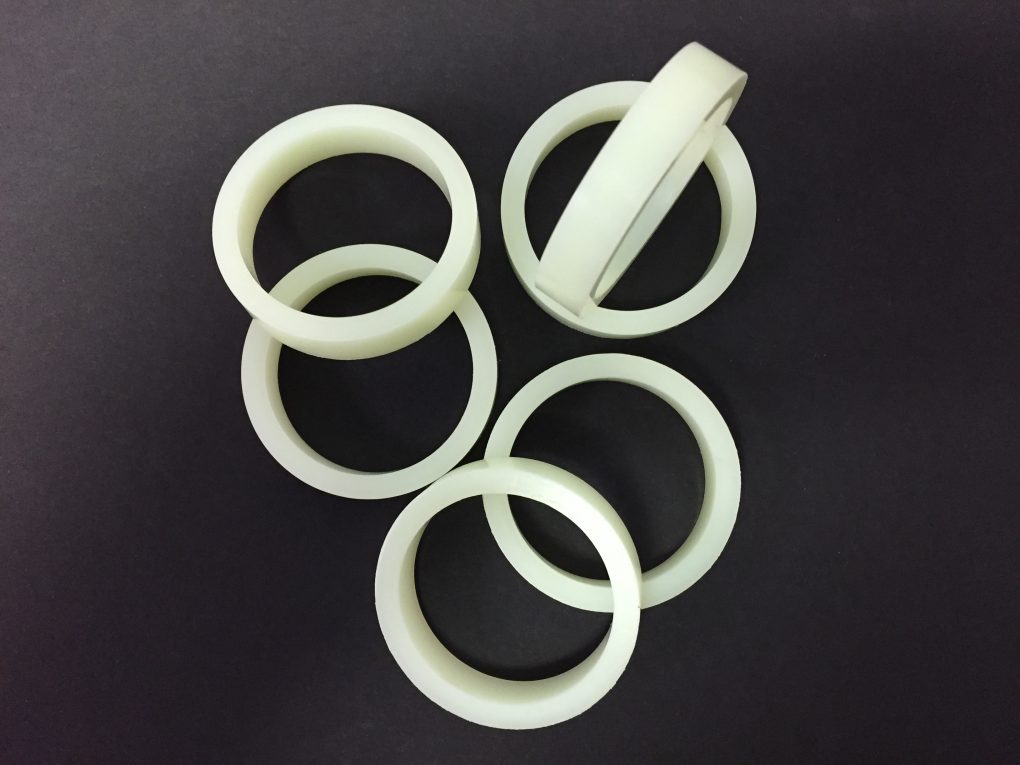Compression molding is one of our capabilities, but it’s not something people regularly call us about – as in, “Hey! We need some of those compression molded parts!”
In actuality, compression molding is a process we recommend to customers when a part has very tight tolerances, is very small, has a strange shape – or combination of these.
Once we recommend this process, versus our urethane cast molding process, that’s when we get the questions – which we cover in this FAQ.
Q: What is compression molding?

The process is just as the name implies: we pour urethane material into a clamshell mold. We also work with silicone, but it’s not a liquid material, and thus not poured.

We then put this mold under a lot of pressure and heat. The pressures on the top plate force the casting material to fill all mold areas and dispel air.

Once the material is cured, it’s removed from the mold.

The final step is to carefully separate the part itself from the material. You can see one of parts in the lower corner of the mold in the photo above.
Q: When do you recommend compression molding?
Both processes – compression molding and cast molding — produce the same durable urethane or silicone parts. However, we recommend compression molding when a customer has parts that have a non-standard shape or must meet very tight tolerances.
Another reason for compression molding is the part is so small, or the material so soft, we can’t perform any type of secondary operation, such as machining or grinding.
In this case, compression molding is used to ensure the part meets specified tolerances – such as with these red seals.

The customer could no longer get this seal, so we reversed engineered it. With some back and forth from the customer, we were able to manufacture these small seals, with the proper tolerances, using compression molding. Meeting the tolerances was critically important to the customer as these seals required a specific type of fit.
Cost is a factor we consider as well. We recommend compression molding when it will save the customer money on the manufacture of the parts. Using our cast process to make the red seals, for example, would have been cost prohibitive.
Ditto for this next part, used in a collector case, which required compression molding due to the irregular shape.

Before creating the mold, we spoke extensively with the customer about what parts they wanted us to create now, as well as potential other sizes he might need later in the project.
With this information, we designed the mold in multiple sections to accommodate other sizes in the future – saving the customer lead time and costs. The other sections of the mold could then be used to make several different sized parts – similar to a mix and match option.
What are some of the benefits of compression molding?
The number one benefit is that we can create very small parts to very tight tolerances. For example, in the seals shown in the photo below, the tolerance is +/-0.005”.

With compression molding, every part comes out perfect – meaning no voids, holes and bubbles (due to the pressure applied during the process) in the material.
Offering compression molding is just another way we help out customers solve challenges, get their parts to market faster, and most important, save time and money.







